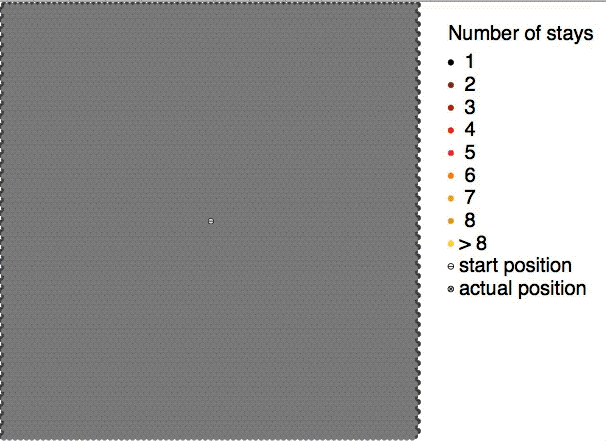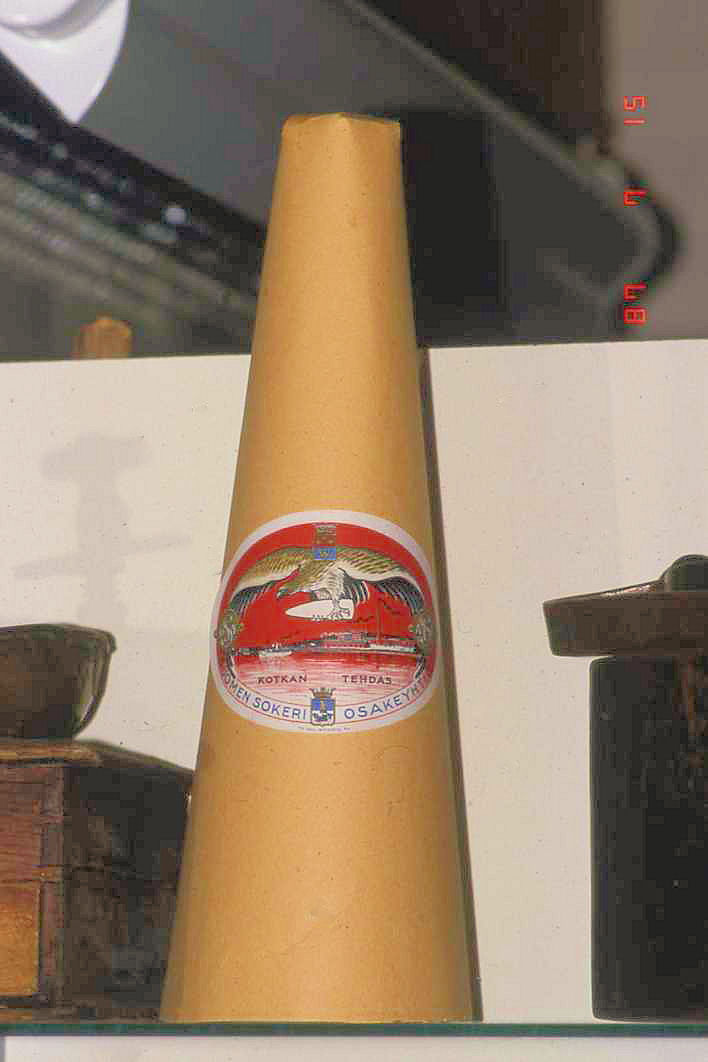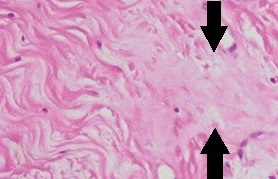|
Differential Centrifugation
In biochemistry and cell biology, differential centrifugation (also known as differential velocity centrifugation) is a common procedure used to separate organelles and other sub-cellular particles based on their sedimentation rate. Although often applied in biological analysis, differential centrifugation is a general technique also suitable for crude purification of non-living suspended particles (e.g. nanoparticles, colloidal particles, viruses). In a typical case where differential centrifugation is used to analyze cell-biological phenomena (e.g. organelle distribution), a tissue sample is first lysed to break the cell membranes and release the organelles and cytosol. The lysate is then subjected to repeated centrifugations, where particles that sediment sufficiently quickly at a given centrifugal force for a given time form a compact "pellet" at the bottom of the centrifugation tube. After each centrifugation, the ''supernatant'' (non-pelleted solution) is removed from t ... [...More Info...] [...Related Items...] OR: [Wikipedia] [Google] [Baidu] |
Brownian Motion
Brownian motion is the random motion of particles suspended in a medium (a liquid or a gas). The traditional mathematical formulation of Brownian motion is that of the Wiener process, which is often called Brownian motion, even in mathematical sources. This motion pattern typically consists of Randomness, random fluctuations in a particle's position inside a fluid sub-domain, followed by a relocation to another sub-domain. Each relocation is followed by more fluctuations within the new closed volume. This pattern describes a fluid at thermal equilibrium, defined by a given temperature. Within such a fluid, there exists no preferential direction of flow (as in transport phenomena). More specifically, the fluid's overall Linear momentum, linear and Angular momentum, angular momenta remain null over time. The Kinetic energy, kinetic energies of the molecular Brownian motions, together with those of molecular rotations and vibrations, sum up to the caloric component of a fluid's in ... [...More Info...] [...Related Items...] OR: [Wikipedia] [Google] [Baidu] |
Sucrose
Sucrose, a disaccharide, is a sugar composed of glucose and fructose subunits. It is produced naturally in plants and is the main constituent of white sugar. It has the molecular formula . For human consumption, sucrose is extracted and refined from either sugarcane or sugar beet. Sugar mills – typically located in tropical regions near where sugarcane is grown – crush the cane and produce raw sugar which is shipped to other factories for refining into pure sucrose. Sugar beet factories are located in temperate climates where the beet is grown, and process the beets directly into refined sugar. The Sugar refinery, sugar-refining process involves washing the raw sugar crystals before dissolving them into a sugar syrup which is filtered and then passed over carbon to remove any residual colour. The sugar syrup is then concentrated by boiling under a vacuum and crystallized as the final purification process to produce crystals of pure sucrose that are clear, odorless, and sweet. ... [...More Info...] [...Related Items...] OR: [Wikipedia] [Google] [Baidu] |
Sedimentation Coefficient
In chemistry, the sedimentation coefficient () of a particle characterizes its sedimentation (tendency to settle out of suspension) during centrifugation. It is defined as the ratio of a particle's sedimentation velocity to the applied acceleration causing the sedimentation. s = \frac The sedimentation speed is also the terminal velocity. It is constant because the force applied to a particle by gravity or by a centrifuge (typically in multiples of tens of thousands of gravities in an ultracentrifuge) is balanced by the viscous resistance (or "drag") of the fluid (normally water) through which the particle is moving. The applied acceleration can be either the gravitational acceleration , or more commonly the centrifugal acceleration . In the latter case, is the angular velocity of the rotor and is the distance of a particle to the rotor axis (radius). The viscous resistance for a spherical particle is given by Stokes' law: F_d = 6\pi\eta r_0 v where is the viscosi ... [...More Info...] [...Related Items...] OR: [Wikipedia] [Google] [Baidu] |
Molecular Weight
A molecule is a group of two or more atoms that are held together by Force, attractive forces known as chemical bonds; depending on context, the term may or may not include ions that satisfy this criterion. In quantum physics, organic chemistry, and biochemistry, the distinction from ions is dropped and ''molecule'' is often used when referring to polyatomic ions. A molecule may be homonuclear, that is, it consists of atoms of one chemical element, e.g. two atoms in the oxygen molecule (O2); or it may be heteronuclear, a chemical compound composed of more than one element, e.g. water (molecule), water (two hydrogen atoms and one oxygen atom; H2O). In the kinetic theory of gases, the term ''molecule'' is often used for any gaseous particle regardless of its composition. This relaxes the requirement that a molecule contains two or more atoms, since the noble gases are individual atoms. Atoms and complexes connected by non-covalent interactions, such as hydrogen bonds or ionic ... [...More Info...] [...Related Items...] OR: [Wikipedia] [Google] [Baidu] |
Partial Specific Volume
The partial specific volume \bar, express the variation of the extensive volume of a mixture in respect to composition of the masses. It is the partial derivative of volume with respect to the mass of the component of interest. :V=\sum _^n m_i \bar, where \bar is the partial specific volume of a component i defined as: :\bar=\left( \frac \right)_. The PSV is usually measured in milliLiters (mL) per gram (g), proteins > 30 kDa can be assumed to have a partial specific volume of 0.708 mL/g. Experimental determination is possible by measuring the natural frequency of a U-shaped tube filled successively with air, buffer and protein solution. Properties The weighted sum of partial specific volumes of a mixture or solution is an inverse of density of the mixture namely the specific volume of the mixture. :v = \sum_i w_i\cdot \bar = \frac :\sum_i \rho_i \cdot \bar = 1 See also * Partial molar property *Apparent molar property In thermodynamics, an apparent molar property of a sol ... [...More Info...] [...Related Items...] OR: [Wikipedia] [Google] [Baidu] |
Ultracentrifuge
An ultracentrifuge is a centrifuge optimized for spinning a rotor at very high speeds, capable of generating acceleration as high as (approx. ). There are two kinds of ultracentrifuges, the preparative and the analytical ultracentrifuge. Both classes of instruments find important uses in molecular biology, biochemistry, and polymer science.Susan R. Mikkelsen & Eduardo Cortón. Bioanalytical Chemistry, Ch. 13. Centrifugation Methods. John Wiley & Sons, Mar 4, 2004, pp. 247-267. History In 1924 Theodor Svedberg built a centrifuge capable of generating 7,000 g (at 12,000 rpm), and called it the ultracentrifuge, to juxtapose it with the Ultramicroscope that had been developed previously. In 1925-1926 Svedberg constructed a new ultracentrifuge that permitted fields up to 100,000 g (42,000 rpm). Modern ultracentrifuges are typically classified as allowing greater than 100,000 g. Svedberg won the Nobel Prize in Chemistry in 1926 for his research on colloids and proteins using the ultrac ... [...More Info...] [...Related Items...] OR: [Wikipedia] [Google] [Baidu] |
Microsomes
In cell biology, microsomes are heterogeneous vesicle-like artifacts (~20-200 nm diameter) re-formed from pieces of the endoplasmic reticulum (ER) when eukaryotic cells are broken-up in the laboratory; microsomes are not present in healthy, living cells. Rough (containing ribosomes) and smooth (without ribosomes) microsomes are made from the endoplasmic reticulum through cell disruption. These microsomes have an inside that is exactly the same as the endoplasmic reticulum lumen. Both forms of microsomes can be purified by a process known as equilibrium density centrifugation. Rough and smooth microsomes do differ in their proteins and rough microsomes have shown occurrence of translation and translocation at the same time besides certain exceptions from proteins in yeast. Signal Hypothesis The Signal Hypothesis was postulated by Günter Blobel and David Sabatini in 1971, stating that a unique peptide sequence is encoded by mRNA specific for proteins destined for transloc ... [...More Info...] [...Related Items...] OR: [Wikipedia] [Google] [Baidu] |
Dounce Homogenizer
Invented by and named for Alexander Dounce , a Dounce homogenizer or "Douncer", is a cylindrical glass tube, closed at one end, with two glass pestles of carefully specified outer diameters, intended for the gentle homogenization of eukaryotic cells (e.g. mammalian cells). Dounce homogenizers are still commonly used today to isolate cellular organelles. The two Dounce homogenizer pestles (known as the "loose" or "A" and "tight" or "B" pestles), have a carefully specified outer diameter, relative to the inner diameter of the cylinder. The "A" (loose) pestle has a clearance from the cylinder wall of (~0.0025 - 0.0055 in.) while the "B" (tight) pestle has a clearance of (~0.0005 - 0.0025 in.). This allows for tissue and cells to be lysed by shear stress with minimal (if any) degree of heating, thereby leaving extracted organelles or heat-sensitive enzyme complexes largely intact. Typically, a soft tissue (e.g. mammalian liver) is cut or broken into smaller pieces and placed into th ... [...More Info...] [...Related Items...] OR: [Wikipedia] [Google] [Baidu] |
Homogenization (biology)
Homogenization, in cell biology or molecular biology, is a process whereby different fractions of a biological sample become equal in composition. It can be a disease sign in histopathology, or an intentional process in research: A homogenized sample is equal in composition throughout, so that removing a fraction does not alter the overall molecular make-up of the sample remaining, and is identical to the fraction removed. Induced homogenization in biology is often followed by molecular extraction and various analytical techniques, including ELISA and western blot. Methods Homogenization of tissue in solution is often performed simultaneously with cell lysis. To prevent lysis however, the tissue (or collection of cells, e.g. from cell culture) can be kept at temperatures slightly above zero to prevent Autolysis (biology), autolysis, and in an Isotonicity, isotonic solution to prevent osmosis, osmotic damage. If freezing the tissue is possible, cryohomogenization can be performed un ... [...More Info...] [...Related Items...] OR: [Wikipedia] [Google] [Baidu] |
Angular Velocity
In physics, angular velocity (symbol or \vec, the lowercase Greek letter omega), also known as the angular frequency vector,(UP1) is a pseudovector representation of how the angular position or orientation of an object changes with time, i.e. how quickly an object rotates (spins or revolves) around an axis of rotation and how fast the axis itself changes direction. The magnitude of the pseudovector, \omega=\, \boldsymbol\, , represents the '' angular speed'' (or ''angular frequency''), the angular rate at which the object rotates (spins or revolves). The pseudovector direction \hat\boldsymbol=\boldsymbol/\omega is normal to the instantaneous plane of rotation or angular displacement. There are two types of angular velocity: * Orbital angular velocity refers to how fast a point object revolves about a fixed origin, i.e. the time rate of change of its angular position relative to the origin. * Spin angular velocity refers to how fast a rigid body rotates around a f ... [...More Info...] [...Related Items...] OR: [Wikipedia] [Google] [Baidu] |
Radius Of Rotation
In classical geometry, a radius (: radii or radiuses) of a circle or sphere is any of the line segments from its center to its perimeter, and in more modern usage, it is also their length. The radius of a regular polygon is the line segment or distance from its center to any of its vertices. The name comes from the Latin ''radius'', meaning ray but also the spoke of a chariot wheel. as a function of axial position ../nowiki>" Spherical coordinates In a spherical coordinate system, the radius describes the distance of a point from a fixed origin. Its position if further defined by the polar angle measured between the radial direction and a fixed zenith direction, and the azimuth angle, the angle between the orthogonal projection of the radial direction on a reference plane that passes through the origin and is orthogonal to the zenith, and a fixed reference direction in that plane. See also * Bend radius *Filling radius in Riemannian geometry *Mean radius *Radius of convergen ... [...More Info...] [...Related Items...] OR: [Wikipedia] [Google] [Baidu] |






